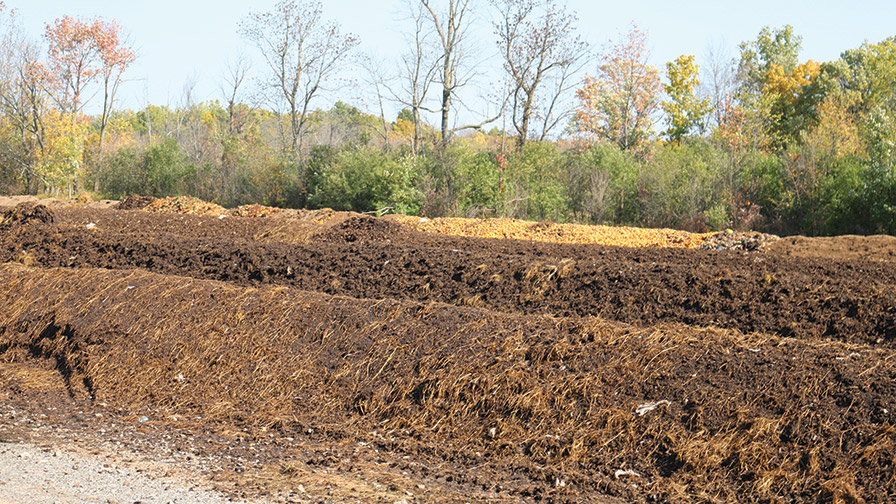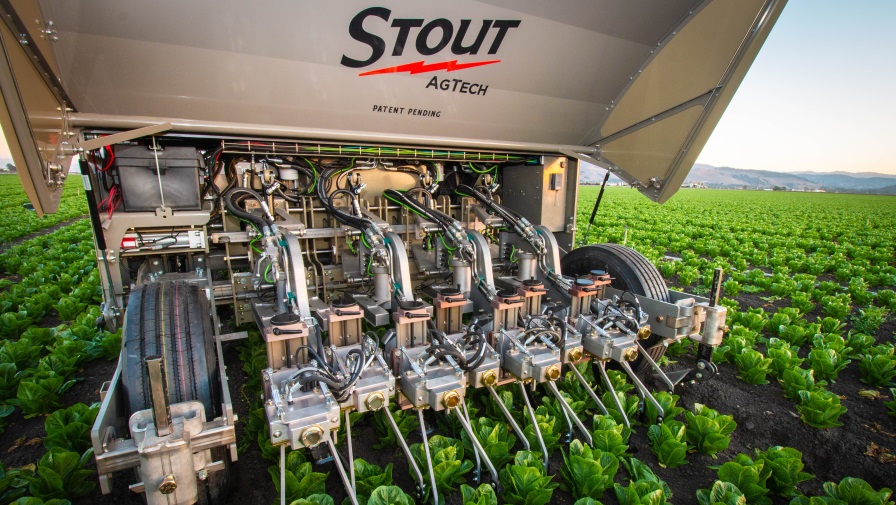The Unseen Benefits of Improved Soil Health

In 1 gram of soil, there can be 1 billion bacteria. That includes more than 6,000 species and more than 200 yards of fungal hyphae. It’s important to know that carbon additions to the soil feed these organisms. You can provide carbon through crop and cover crop residues, root exudates, as well as from compost (above) and manure.
With the urgent tasks growers address on intensive vegetable production operations — choosing the right ground preparation, seed, fertilizer and irrigation rate and timing, as well as securing enough labor — it’s easy for soil health to take a back seat.
But it’s important to carve out time to seriously address it. Soil quality has a surprising array of long- and short-term impacts on basic crop production: cycling and transformation of nutrients; improvements in soil aggregation; increased water infiltration, crop yields, reduced soil crusting, improved “workability” of the soil; and more.
What Impact Do Amendments Have on Soil Health?
We know that adding carbon to the soil increases microbial biomass and activity. But how much carbon does it need? And how often should you add carbon – and in what form – to improve soil health? It can be difficult to answer these questions.
Dr. Eric Brennan, a USDA Researcher in Salinas, CA, is addressing these questions in an ongoing, long-term trial.
Brennan and his team are comparing how different soil amendments in vegetable crop production impacts overall soil health.
One group of plots never get compost but have a cover crop once every fourth year.
After six years in an annual rotation with lettuce followed by broccoli, these plots had an average decline in soil microbial biomass carbon (a measurement of the size of the soil microbial population).
Applying compost each year plus a cover crop every fourth year, however, provided a modest increase in microbial biomass. And, not surprisingly, adding compost and a cover crop each year greatly increased microbial biomass carbon over the 6 years.
You can see Dr. Brennan’s take on the study in his YouTube video.
The team concluded that frequent cover cropping provided the most soil health improvement. These long-term data clearly indicate that the use of composts and cover crops benefits the soil microbial community.
Soil Health Can Suppress Disease
You can’t easily see the benefits from the soil’s increased microbial activity, since it can be rather subtle and nuanced. For instance, soils may become more suppressive to soilborne diseases with the additions of soil organic matter. The type of organic matter you add to the soil likely makes a difference.
Dr. Krishna Subbarao from University of California, Davis has documented that broccoli crop residue is unique in its ability to create suppressive soil to both lettuce drop (caused by Sclerotinia minor) and Verticillium wilt (caused by Verticillium daliae).
The mechanisms broccoli uses to do this are complicated. But shifts in the soil microbial population with the addition of broccoli residue appear to be a large part of this effect.
Nitrogen Cycling
Another difficult-to-observe effect of improved soil health is tighter cycling of nitrogen.
Dr. Timothy Bowles observed in a processing tomato production system that soils with higher levels of microbial activity had lower levels of soil nitrate and less tendency to leach nitrate, but still provided the crops with the nitrate that they needed for good growth and yield.
He attributed this effect to the rapid cycling of nitrogen through the microbial community while the crop was able to siphon off the nitrate it needed.
The Science of Cover Crops’ Effectiveness
A tangible effect on the soil health is often observed following the growth of a cover crop. On soils that are particularly difficult to manage, the effect of the cover crop is easier to notice as improvements in tillage, soil aggregation, and water infiltration.
A partial reason for this is that soil microbes secrete carbohydrates that bind small soil particles into larger particles and hold them together and keep them from easily breaking down, thus sealing the soil in the presence of water and improving soil aeration and infiltration.
The Economics of Improving Soil
Given that adding sources of carbon to the soil benefit the soil and crop, how can we economically increase the use of cover crops, carbon-rich soil amendments, and favorable crop rotations in vegetable production?
Compost: Most Common Method
In the Salinas Valley, compost is probably the most common source of carbon added in vegetable production. In fact, its use is often stipulated in lease agreements.
Food safety concerns have reduced its use in some operations, however. In organic operations, pelletized chicken manures (typically mixed with meat and feather meals) appears to substitute for the use of compost to some degree. In a recent study we observed higher levels of soil microbial activity on farms that used these types of fertilizers over other farms that did not.
Cover Crops Options Even in High-Rent Areas
In the Salinas Valley, the economics do not favor the use of cover crops for several reasons. Two top examples are high land rent rates and the risk of missing spring planting schedules. As a result, it is not uncommon that a field may get a cover crop only one year out of 10. Even organic operations may have limited use of cover crops due to these same pressures.
Given these restrictions, some growers have found creative ways to fit cover crops into vegetable rotations.
For example, in fields that finish production by late August or early September, some growers will plant a fast maturing cereal or mustard cover crop and incorporate it into the soil by mid-November. The weather pattern in the Salinas Valley in most years allows this production scheme to succeed.
It’s a nice option. It allows the grower to do the heavy tillage in the fall, preferable over the wet soil typical in spring.
Short-season cover crops help growers fit cover crops into their tight rotations. Even though some sacrifice of the overall benefits of the cover crop is made (i.e., fall incorporated cover crop may leach nitrogen), at least some amount of carbon applied to the soil, which is beneficial.
Some growers have found that reverse mulchers reduce the amount of residue on the top of beds following the use of cover crops. That helps seeding small seeded vegetables such as baby lettuce and spring mixes.
Organic strawberry growers take advantage of broccoli’s proven benefits in suppressing Verticillium wilt. They plant it as either a cover crop (using cheap, open-pollenated seed) or as a cash crop to help address this disease issue.
In summary, it is important to keep soil health as a priority in planning production practices in intensive vegetable production systems. The benefits that soil health provides to vegetables range from subtle to dramatic.
The main goal? To maximize the carbon you add to the soil, supporting beneficial soil microbes. And there’s another major goal. Discovering specific crop rotations that modify the soil microbial population in beneficial ways. Our hope is to identify useful and practical means of maintaining soil health.










